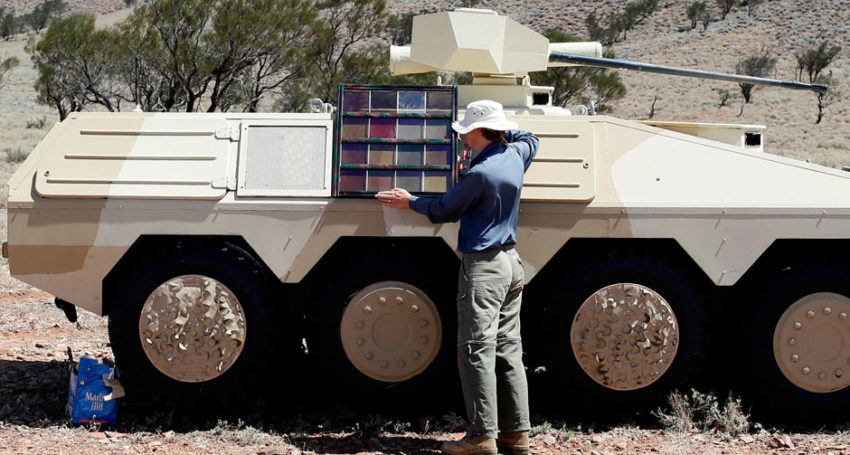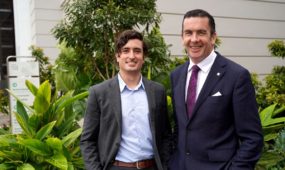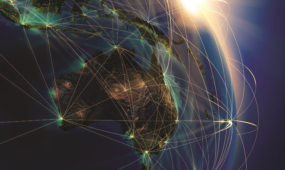The adaptive camouflage cells were developed by researchers from the University of South Australia’s Future Industries Institute in collaboration with the Defence Science and Technology Group.
The cells are made from conducting polymers wrapped in polycarbonate sheets that are able to change colour patterns on demand to closely match surroundings.
The chameleon-like technology was trialled on a tank this year at the Australian Defence Force’s Cultana training site about 370km northwest of South Australia’s capital Adelaide.
The trial findings will be presented at the Future Land Forces Conference in Adelaide on September 7.
Lead researcher Peter Murphy said the cells were able to change colour quickly and did not require constant power to maintain a camouflage pattern.
“We are out to make the vehicle – an armoured carrier or a tank – make them as invisible to the human eye for as long as possible on the battlefield,” he said.
“Existing technology is fixed. It’s painted onto vehicles and done in a number of different skins.
“What our technology has the potential to do is to have adaptive camouflage so a vehicle can switch between different colour patterns.”
The cells are constructed using a multilayer system where two sheets of glass or polycarbonate are used to form the cell.
Conducting polymers are placed inside the polycarbonate casings and a small voltage is run through the cell.
The voltage sent through the cell switches between positive and negative states. This change enables the cell to transition between different colour patterns.
Professor Murphy said the unique camouflage cells only required a small amount of power and could run from a source the size of a watch battery.
The cells are able to change colour in less than a second but the rate of transition can be controlled to allow for a gradual transformation.
Professor Murphy said having a steady transition rate would help make the changes subtle to the human eye.
The cells are currently designed to be 10x10cm but Professor Murphy said they were looking to increase the cells to the size of an A4 sheet of paper.
“We are also looking at flexible polymer cells because when you make it out of polycarbonate sheet it is really not flexible and about 2-3mm thick,” he said.
“It becomes difficult to bend it around the corner and being able to bend the cell and hold it in place is a big advantage.”
The research was conducted by Professor Murphy and Dr Kamil Zuber from the University of South Australia in Adelaide, with help from Dr Vivienne Wheaton from the Defence Science and Technology Group in Melbourne.
The Future Land Forces Conference is being run in association with the 2016 Land Forces event, which is the Southern Hemisphere’s premier defence industry exhibition.
South Australia’s capital Adelaide has three long-standing public universities, Flinders University, University of South Australia, and the University of Adelaide, each of which are consistently rated highly in the international higher education rankings.






